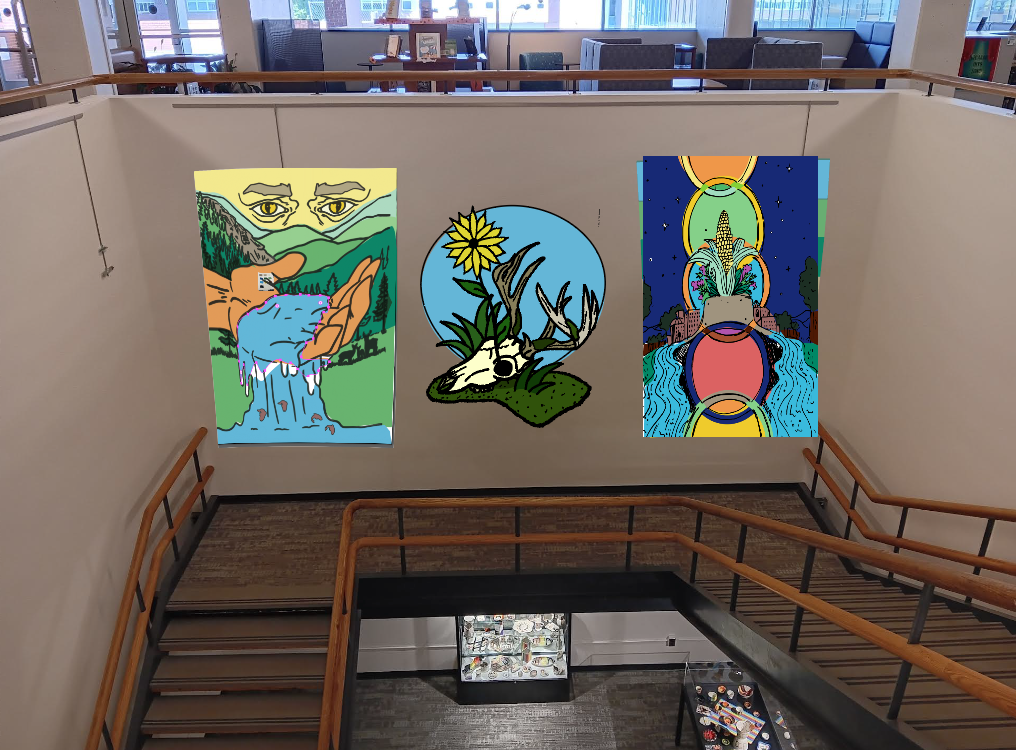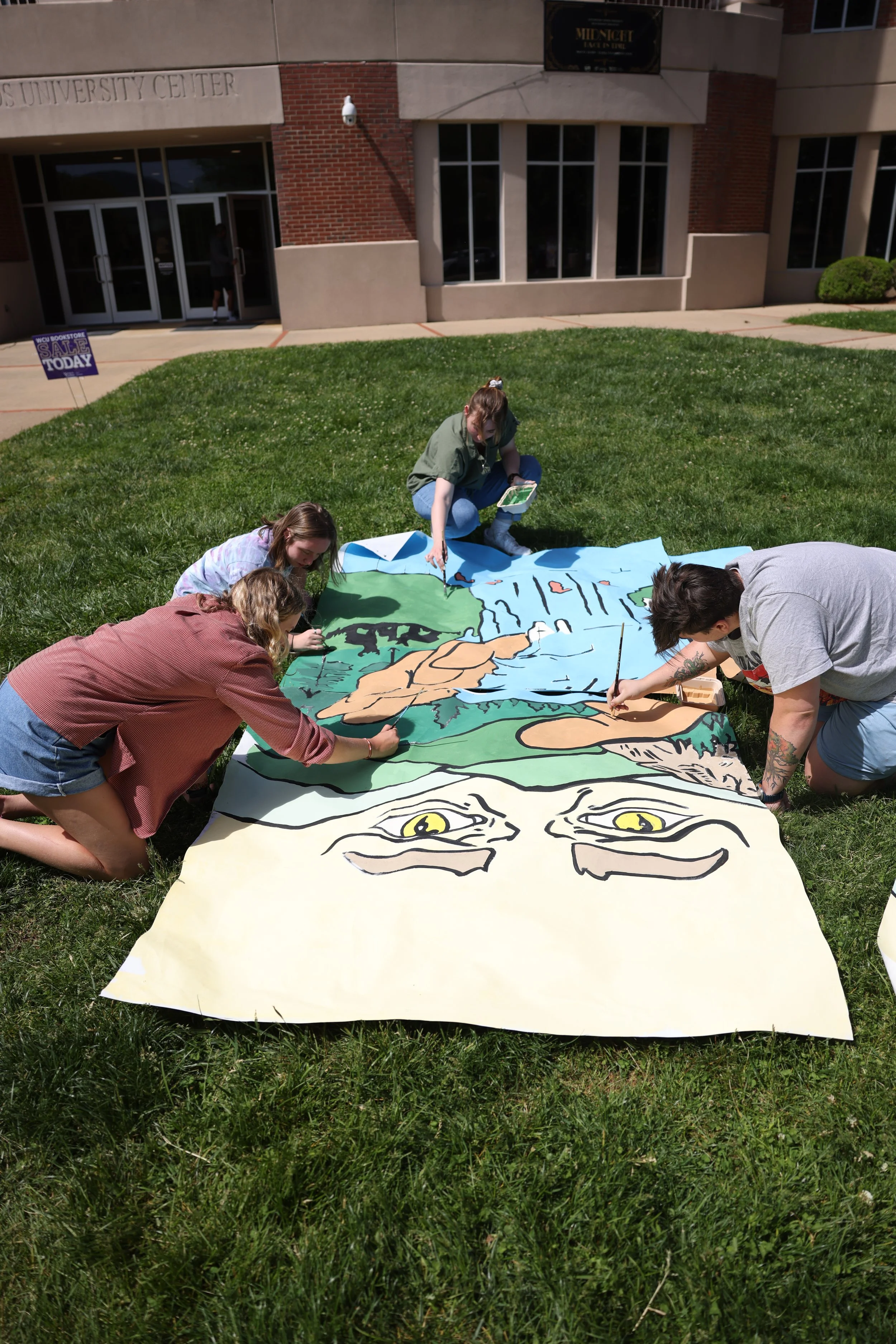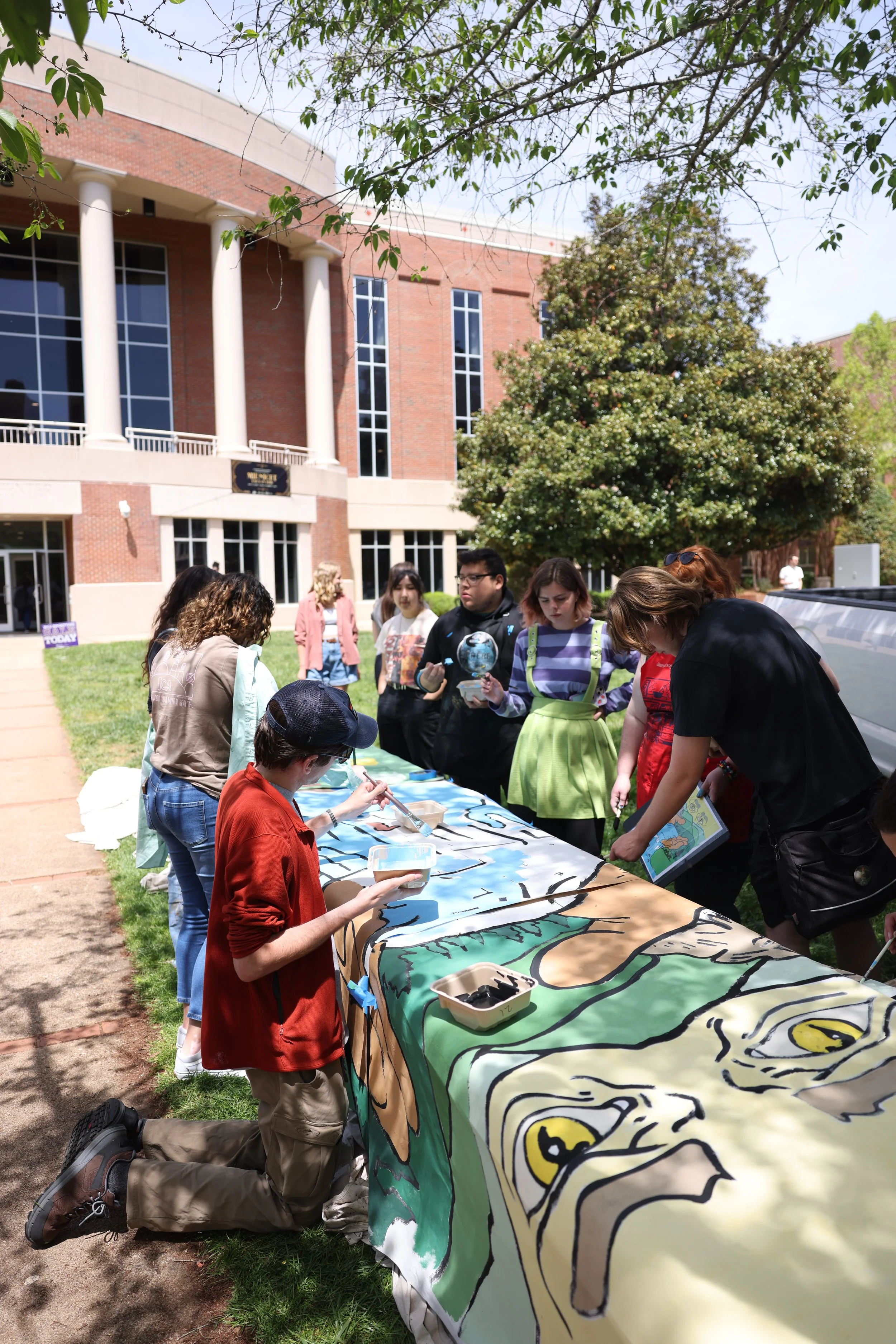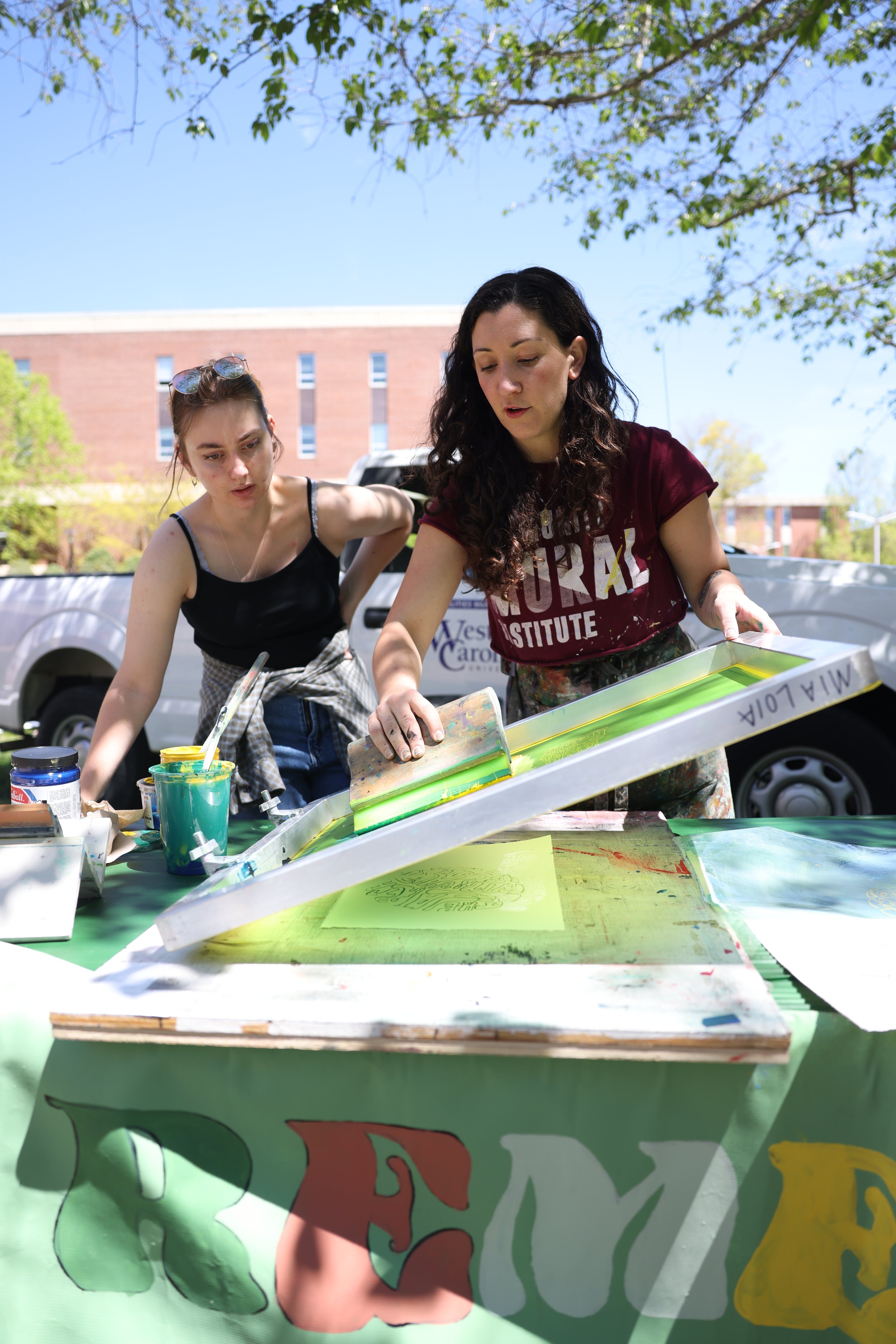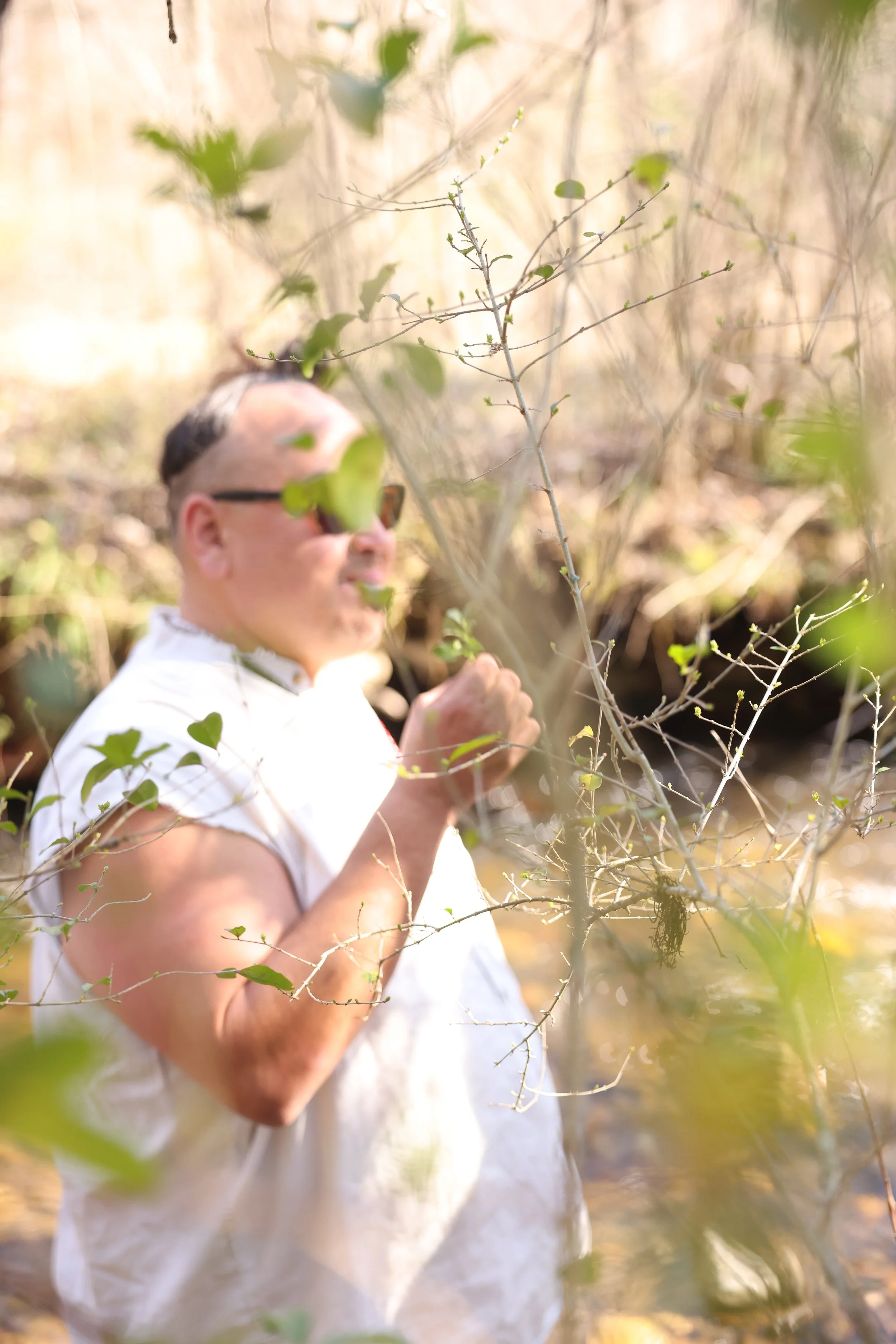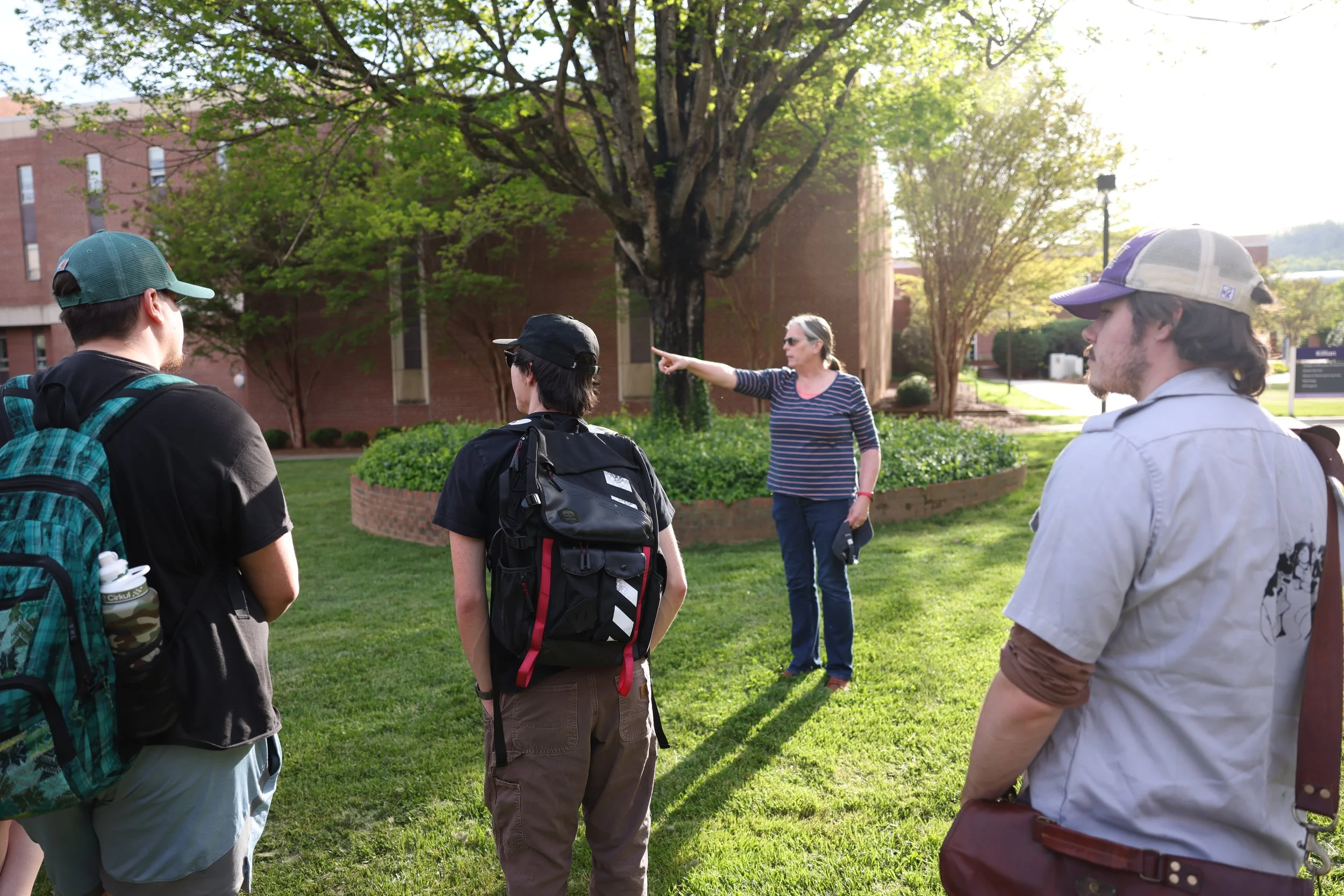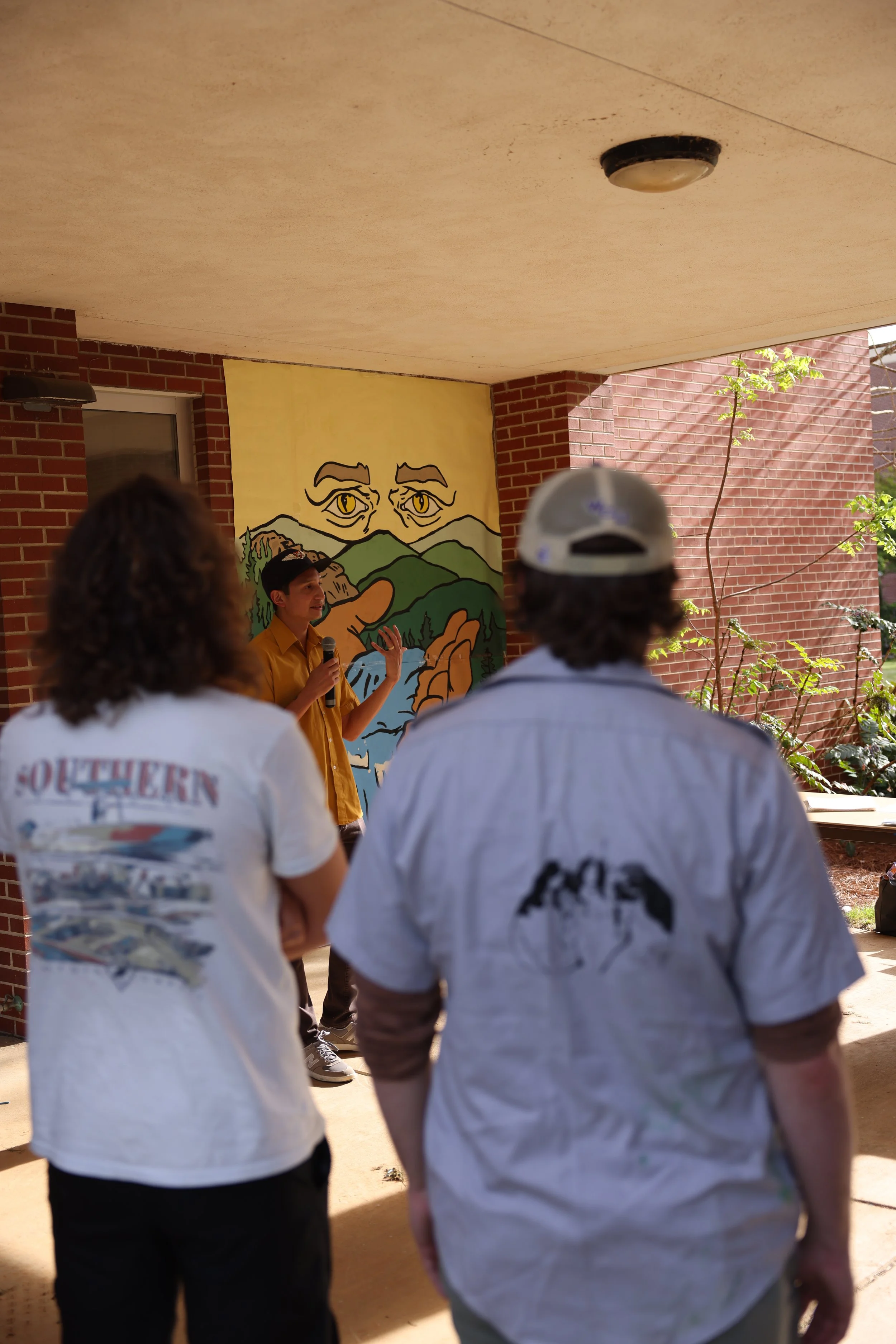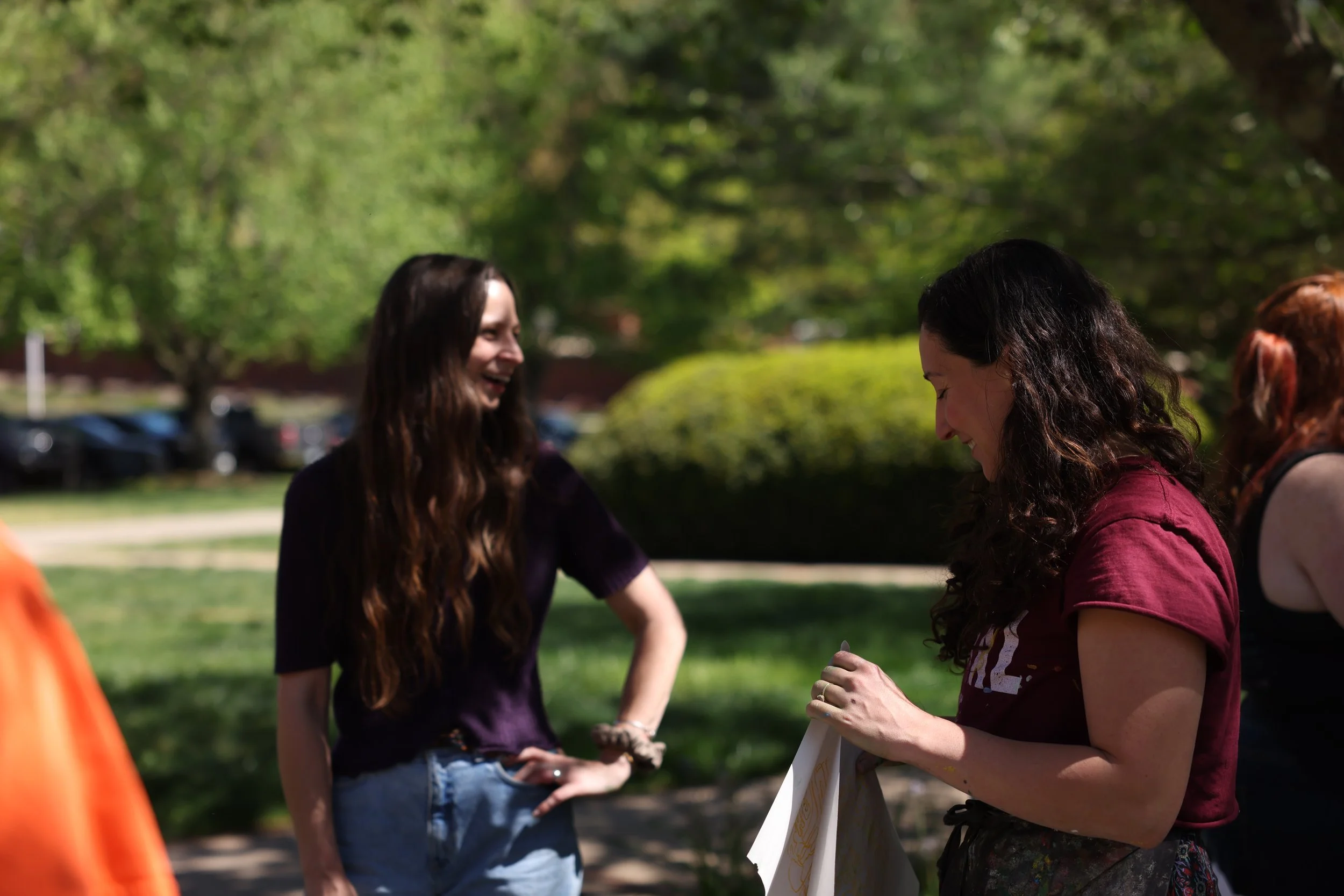
Remembering Tali Tsisgwayahi: Two Sparrows Town
A community art project to recognize the Cherokee and Appalachian environmental history and relationships at Western Carolina University—past, present and future.
Western Carolina University is a Cherokee place. Located at the center of campus, the Killian Building is the former site of the Tali Tsisgwayahi council house and mound, which was cleared in 1956 to make way for the university building. By rematriating signs and symbols of Tali Tsisgwayahi on the campus’ landscape in consultation with EBCI artists, we will attempt to recognize a historic injustice, with the goal of imagining a future centered on community and belonging for the region.
“Remembering Tali Tsisgwayahi/Two Sparrows Town: Past, Present, Future” is a public art installation exploring the Cherokee and Appalachian environmental history of WCU’s campus. It features three large-scale mural panels designed, respectively, by Jakeli Swimmer (EBCI), students in the courses ANTH 351 Environmental Anthropology and ART 132 2-Design (Spring 2024), and Mia Loia in consultation with members of Digali’i Native Students and Friends. The project is coordinated by Dr. Georgia Ennis (Department of Anthropology and Sociology) and artist Mia Loia.
Each panel focuses on a particular period (past, present, or future). It also acknowledges the cyclical understanding of time in Cherokee and other Indigenous philosophies, in which the past, present, and future are always influencing each other. During the Spring 2024 semester, Jakeli Swimmer (EBCI) completed a design for the “past” highlighting the environmental teachings of Tsul’kala (Judaculla), while students in 2D Design (taught by Ms. Loia) worked with students in Environmental Anthropology (taught by Dr. Ennis) to explore themes in the environmental practices and philosophies of Cherokee and Appalachian communities. The design chosen by the students for final development features the skull of an elk —representing the environmental destruction of settlement and the devastation of Native removal—and the hopeful growth of a wildflower taking root. In Fall 2024, Dr. Ennis and Ms. Loia consulted with members of the Digali’i Indigenous Student Association to develop the design for a final “future” panel that rematriates the mound at the center of the university.
Learn more about Tali Tsisgwayahi.
Project background
Method
The mural panels are produced collaboratively in community painting events using the Poly-tab technique. The Poly-tab technique is a mode of creating murals, developed by the Philadelphia Mural institute, national leaders in public art. It allows for large-scale imagery to be laid out in a grid on poly-based material and then installed like a permanent wallpaper on many types of interior and exterior surfaces. Working with mural panels laid on tables allows large groups to contribute to painting a mural before being finished by an artist for installation. The poly-tab technique was shared with the artist Gretta McClain over 10 years ago; she has since gone on to help found the Community Mural Institute, which trains and certifies artists in the process. Artist Mia Loia went through the CMI program and became certified in the Poly-tab method in August 2023.
Thank you
We are grateful to Dr. Thomas Belt, Jakeli Swimmer, Rhiannon Skye Tafoya, and Dr. Lisa Lefler for consulting with us and our students.
This project has been generously sponsored by the WCU’s Sustainable Campus Initiative, the Department of Anthropology and Sociology, the Cherokee and Indigenous Studies program, and the Campus Theme program.
